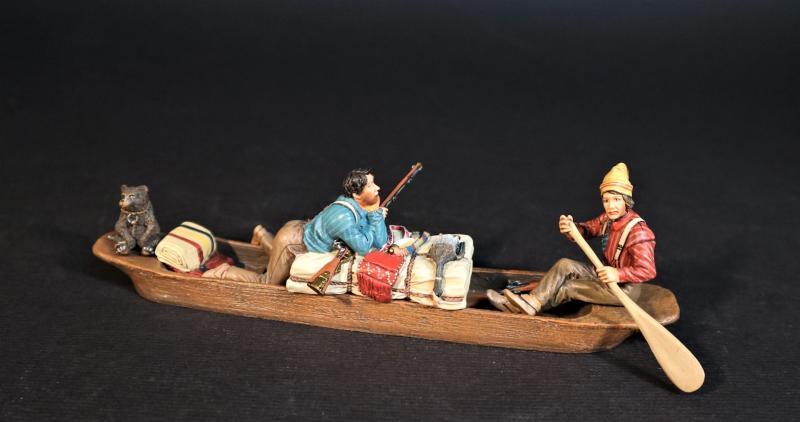“Fur Traders Descending The Missouri”, The Mountain Men, The Fur Trade--two figures, bear, and bundles on boat
$138.00
Item Number: WSP-115
“Fur Traders Descending The Missouri”, The Mountain Men, The Fur Trade
“Fur Traders Descending the Missouri” is an 1845 painting by George Caleb Bingham. It is one of Bingham’s most famous paintings, and the actual work can be seen at the Metropolitan Museum of Art in New York. It was painted around 1845 in the style called Luminism by historians of American Art. It was originally titled, “French Trader, And Half-Breed Son”.
George Caleb Bingham (March 20th, 1811 – July 7th 1879) was an American artist, soldier and politician known in his lifetime as “the Missouri Artist”.
Initially a Whig, he was elected as a delegate to the Missouri legislature before the American Civil War, where he fought against the extension of slavery westward. During the war, although born in Virginia, Bingham was dedicated to the Union cause and became captain of a volunteer company which helped keep the state from joining the Confederacy, and then served four years as Missouri Treasurer.
During his final years, Bingham held several offices in Kansas City, while also serving as Missouri’s Adjutant General.
His paintings of American frontier life along the Missouri River exemplify the Luminist style.
Luminism is an American Landscape painting style of the 1850’s to 1870’s, characterized by effects of light in landscape, through the use of aerial perspective and the concealment of visible brushstrokes. Luminist landscapes emphasize tranquility, and often depict calm, reflective water and soft, hazy sky.
In the summer of 1845, Bingham returned to his St. Louis home from a winter stay in central Missouri, bringing with him several paintings and sketches.
The “Fur Traders Descending The Missouri” was one of those works that he later sent to New York’s American Art-Union, a subscription-based organization that promoted American art nationally through exhibitions and the distribution of popular prints. Titled by the artist, "French Trader & Half breed Son", the Art-Union changed it to the more generic and less controversial "Fur Traders Descending the Missouri". Bingham, who began his career as a portraitist, produced this distinctive genre painting with little precedent in his oeuvre. The tranquil scene, with its luminous atmosphere, idealized the American frontier for the benefit of an Eastern audience.
The painting is also significant in that it captures a quickly vanishing American frontier and lifestyle. By 1845, the year in which Bingham created this now famous artwork, the profession was dominated by trading companies rather than the French voyagers who first pioneered the trade.”
One of the more historically interesting elements of the painting is the cap worn by the man on the right. The toque cap that the father is wearing suggests that he is a voyageur of French descent. The cap was used as a symbol of liberty by the French revolutionaries and was also worn in the United States in the 18th and 19th centuries. Also called a Phrygian cap, it was originally given to slaves in ancient Rome upon their freedom from bondage.
There are many discussions about the dark creature on the left. Is it a cat? Or a tethered bear cub? Researchers at the Metropolitan Museum of Art have concluded that it is a bear.
Many also believe that based on its pointed ears, long, sharp snout, and visible tongue, that this is a black fox. Black fox pelts were the most expensive, and therefore most desirable, furs of the time, but in addition black foxes were regarded as spiritually symbolic creatures by many Native American tribes.
Released in SEPTEMBER 2023.

